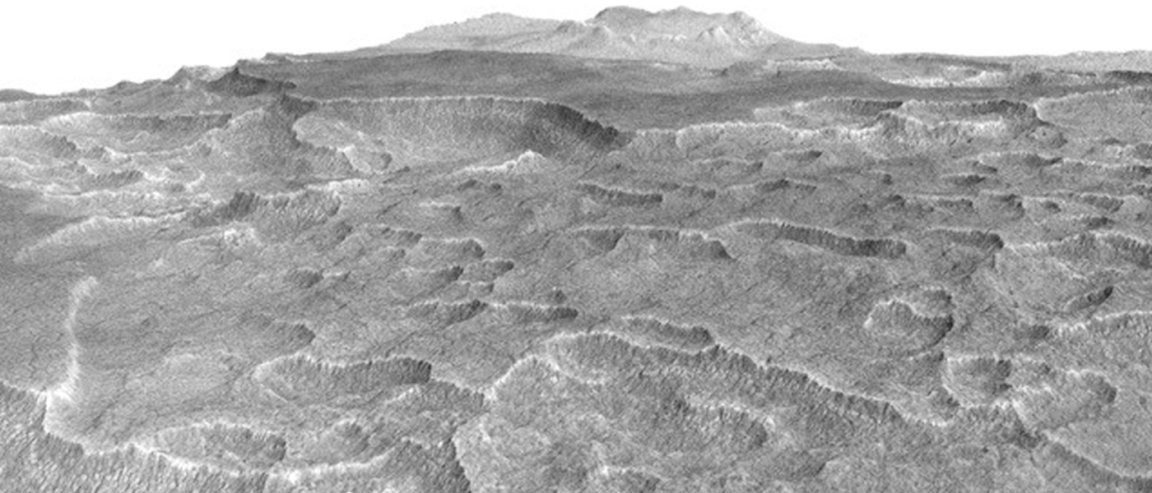
Beneath the Surface
If we want a successful manned mission to Mars, and an eventual human colony, we have to start looking for all the possible resources on the Red Planet – especially a water source.
Researchers have found a large amount of frozen ice beneath a cracked and pitted plain in the Martian surface. The frozen mass is likely carrying as much water as Lake Superior, the largest of the Great Lakes in the US.
The ice was found on Mars’ Utopia Planitia region by the Mars Reconnaissance Orbiter’s Shallow Radar (SHARAD). Analyzing data from more than 600 overhead passes, the research team estimates a thickness from about 79-171 meters (260-560 ft). The ice is made up of about 50 to 85 percent water, mixed with dust and other solids. It is buried underneath 1-10 meters (3-33 ft) of Martian soil.

“This deposit probably formed as snowfall accumulating into an ice sheet mixed with dust during a period in Mars history when the planet’s axis was more tilted than it is today,” said lead author Cassie Stuurman in a statement.
Climate record
The deposit accounts for around one percent of all water found on the planet. This might not sound like much, but it does double the frozen ice beneath Mars’ northern plains. And, the ice can easily be tapped by astronauts or any mission that wants to do so.
“This deposit is probably more accessible than most water ice on Mars, because it is at a relatively low latitude and it lies in a flat, smooth area where landing a spacecraft would be easier than at some of the other areas with buried ice,” said Jack Holt, co-author of the paper.
Any Martian water found, even in ice form, can be a candidate for searching for signs of life on the Red Planet. Ice can contain evidence of any life form that may have resided there. Also, like what we do with Earth’s own polar ice, scientists can use the deposit to learn more about the climate of Mars thousands of years ago.
“Sampling and using this ice with a future mission could help keep astronauts alive, while also helping them unlock the secrets of Martian ice ages,” says co-author Joe Levy.